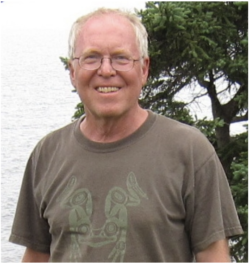
Education
Stephen (Steve) Bates was born in Philadelphia, Pennsylvania (USA) and soon started to explore the world. During his early childhood and teenage years, following the adventures of his father as a writer and editor, he lived in places like Mallorca (Spain), New York City (USA), Dhahran (Saudi Arabia) and Lausanne (Switzerland), where he finished high school in 1967, and quickly became fluent in French. Back to the USA, Steve started university at Goddard College in Plainfield, Vermont, where he met Judith Singer. Steve and Judy married in 1971, and lived in New York, where Steve obtained his B.Sc. degree at Stony Brook University. Steve continued his studies at the City College of New York, where he obtained his master’s degree in Marine Biology. In 1974, Steve and Judy moved to Canada, where he obtained his doctorate degree in Biological Oceanography at Dalhousie University (Halifax, Canada), in 1979. After living and working in different cities from Quebec, New Brunswick to Nova Scotia, they now reside in Halifax (Nova Scotia), within walking distance of their two married sons, Aaron and Joshua, and their two grandchildren (soon to be four).
Life and Career
From 1979 to 1982, Steve started his brilliant scientific career as a post-doctoral fellow at the Université du Québec (Institut National de la Recherché Scientifique; INRS-Eau), where he studied the mechanisms of zinc uptake by phytoplankton. In 1982, he received a National Sciences and Engineering Research Council (NSERC) industrial post-doctoral fellowship, which enabled him to work at the Bedford Institute of Oceanography, in Dartmouth, Nova Scotia. He spent the final year of this post doc at the National Research Council of Canada, in the neighboring city, Halifax. His research was focused on fluorescence induction as a proxy for photosynthesis in micro- and macroalgae.
In 1989, Steve joined Fisheries and Oceans Canada (DFO) in Moncton, New Brunswick, where he became one of the world’s most influential scientists on the ecophysiology of toxic diatoms. In 2008, severe cuts to the DFO’s harmful phytoplankton program led to Steve’s early retirement. However, he was determined to continue writing, publishing and editing, as well as mentoring students from around the world. He was able to do this by becoming a Scientist Emeritus with DFO. Many of the students that Steve mentored have gone on to pursue their own careers in Science and maintain contact with him. Steve has thus remained engaged with the scientific community and has unselfishly shared his knowledge and expertise with those who express an interest.
Steve is affiliated to five international scientific societies and has acted as regular referee for at least 15 peer-review journals. He also served as Secretary of ISSHA (2000–2005), and was instrumental in working on the ISSHA website. Steve enjoys performing with the Brazilian style samba batucada band, Samba Nova, in which he plays the agogo bells.
The species Pseudo-nitzschia batesiana was named to honor Steve.
Research strategy and mentoring
A toxic bloom of Pseudo-nitzschia multiseries off Prince Edward Island, Canada in 1987 – resulting in the accumulation of domoic acid in blue mussels and causing the death of three people and severe illness in more than a hundred – prompted an important shift and focus in Steve’s scientific career. The poisoning later became known as Amnesic Shellfish Poisoning. Steve was part of the team of researchers at the National Research Council of Canada that quickly and effectively solved the mystery of the origin of the toxin. He was the lead author of the paper describing toxin production by a diatom and associating it with human poisoning. Since then, Steve has dedicated most of his research to toxic diatoms, their ecophysiology and production of the neurotoxin domoic acid. Steve has pioneered much of the research on toxic diatoms, particularly on their growth and physiological ecology.
Furthermore, Steve has been instrumental in writing reviews on toxic diatoms and their toxins, providing important updates on current research and suggestions for future work. He is currently working on an extensive review of all major HAB events and closures in Canada, which will be published as a DFO technical report. Steve has also made a significant contribution to the scientific community by establishing and continuously updating an extensive bibliography on toxic diatoms and domoic acid (DAPR).
Steve’s able technician and co-author was Claude Léger at DFO from 1989 until his retirement in 2008. During that period, Steve mentored an uncountable number of high school and undergraduate students. Some of the graduate students and established scientists who worked in Steve’s laboratory include: Mark Laflamme, Moncton (1993); Jefferson Turner and Jean Lincoln, Massachusetts, USA (1994, 1996); Nikolai Davidovich, Crimea, Ukraine (1996); María José Alvarez, Vigo, Spain (1998); Yang Zhen Bo, Hong Kong (1999); Katie Rose Boissonneault, Woods Hole, USA (2001); and Inès Sahraoui, Bizerte, Tunisia (2005).
10 Key publications
Bates SS, CJ Bird, ASW de Freitas, R Foxall, M Gilgan, LA Hanic, GR Johnson, AW McCulloch, P Odense, R Pocklington, MA Quilliam, PG Sim, JC Smith, DV Subba Rao, ECD Todd, JA Walter, JLC Wright. 1989. Pennate diatom Nitzschia pungens as the primary source of domoic acid, a toxin in shellfish from eastern Prince Edward Island, Canada. Can. J. Fish. Aquat. Sci. 46, 1203-1215.
Bates SS, ASW de Freitas, JE Milley, R Pocklington, MA Quilliam, JC Smith, J Worms. 1991. Controls on domoic acid production by the diatom Nitzschia pungens f. multiseries in culture: nutrients and irradiance. Can. J. Fish. Aquat. Sci. 48, 1136-1144.
Bates SS, J Worms, JC Smith.1993. Effects of ammonium and nitrate on growth and domoic acid production by Nitzschia pungens in batch culture. Can. J. Fish. Aquat. Sci. 50, 1248-1254.
Bates SS, DJ Douglas, GJ Doucette, C Léger. 1995. Enhancement of domoic acid production by reintroducing bacteria to axenic cultures of the diatom Pseudo-nitzschia multiseries. Nat. Toxins 3, 428-435.
Bates SS, DL Garrison, RA Horner. 1998. Bloom dynamics and physiology of domoicacid-producing Pseudo-nitzschia species. NATO ASI Series G Ecological Sciences 41, 267-292.
Bates SS. 1998. Ecophysiology and metabolism of ASP toxin production. NATO ASI Series G Ecological Sciences 41, 405-426.
Lincoln JA, JT Turner, SS Bates, C Léger, DA Gauthier. 2001. Feeding, egg production, and egg hatching success of the copepods Acartia tonsa and Temora longicornis on diets of the toxic diatom Pseudo-nitzschia multiseries and the non-toxic diatom Pseudonitzschia pungens. Hydrobiologia 453, 107-120.
Davidovich NA, SS Bates. 2002. Sexual reproduction in the pennate diatoms Pseudo-nitzschia multiseries and P. pseudodelicatissima (Bacillariophyceae). J. Phycol. 34, 126-137.
Trainer VL, SS Bates, N Lundholm, AE Thessen, WP Cochlan, NG Adams, CG Trick. 2012. Pseudo-nitzschia physiological ecology, phylogeny, toxicity, monitoring and impacts on ecosystem health. Harmful Algae 14, 271-300.
Lelong A, H Hégaret, P Soudant, SS Bates. 2012. Pseudo-nitzschia (Bacillariophyceae) species, domoic acid and amnesic shellfish poisoning: revisiting previous paradigms. Phycologia 51, 168-216.
Bates SS, KA Hubbard, N Lundholm, M Montresor, CP Leaw. 2018. Pseudo-nitzschia, Nitzschia, and domoic acid: new research since 2011. Harmful Algae 79, 3-43.
----
Prepared by Nina Lundholm, Luiz Mafra, Nancy Lewis, Mike Quilliam and Claude Léger.

